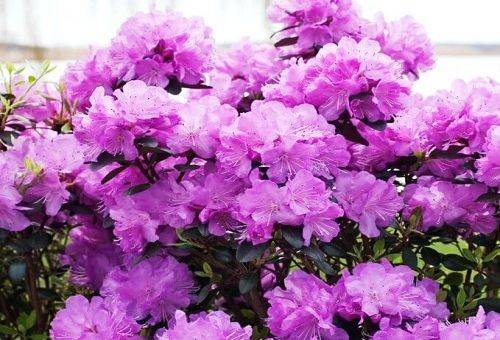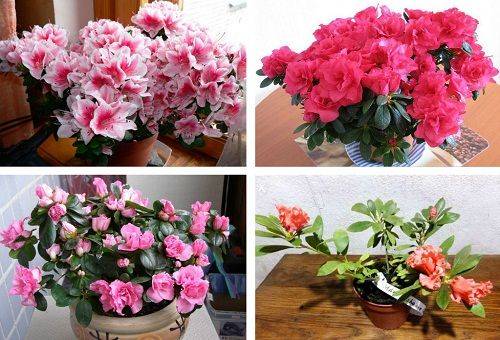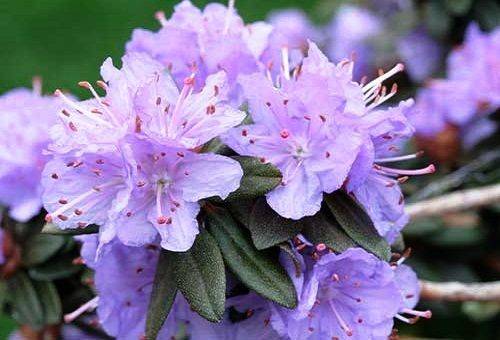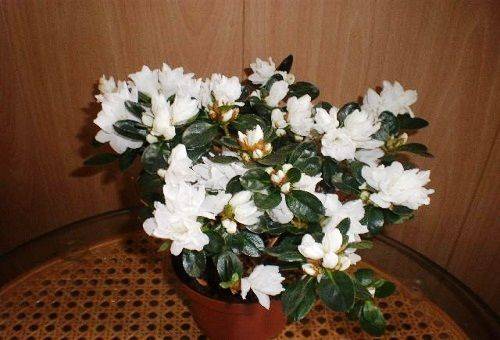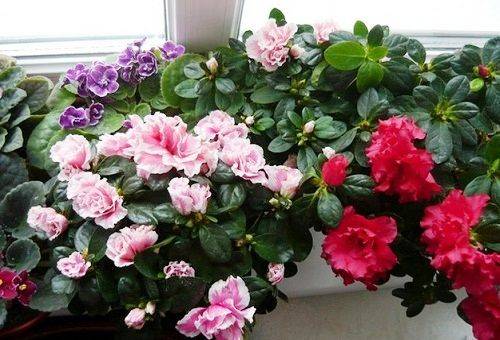How to care for room azalea at home?
Content:
Due to its unique and versatile decorative appeal, rhododendron is one of the most popular indoor plants. Caring for azalea is quite simple, but consists of a number of important nuances, non-observance of which can lead the flower to a deplorable state. Success depends not only on creating a suitable environment at home, but also on the quality of traditional manipulations. Each variety of azalea has its own specifics, but the basic recommendations for all cases are the same.
Azalea: description, popular varieties and their characteristics
The attractiveness of rhododendrons is based not only on the appearance of inflorescences, but also on the original form, as well as the color of the leaves. Young seedlings are characterized by the presence of reddish hairs in the veins, the shape of evergreen leaves can be varied. The flower is small, medium and large, standing alone or collected in lush inflorescences. If you properly and efficiently care for a life-loving plant, you can count on its abundant flowering in the autumn-spring period.
To date, indoor azalea is represented by almost four hundred varieties, which are divided by flowering period to simplify the classification. The following representatives of the family are considered the most popular:
- Early flowering (flowering occurs in December-January). This group includes Dresden 1936 with its large medium-double flowers of a saturated pink hue, Enzette with even more massive pink inflorescences and Weiss Schämme - a white variety with a pink tint.
- Medium flowering (January-March). The most popular are Apollo (complex flowers with patterns of red brick color) and Kunt Erven (massive bright scarlet terry buds).
- Late blooming (February-April). Most often, at home, gardeners prefer to grow Hexe (middle flowers of a rich wine shade) and Sakuntalu (huge blue-and-white terry buds).
In addition, in many houses you can find Japanese azalea. It is easy to distinguish by abundant flowering with original funnels of various shades.
Creating optimal conditions for growing indoor rhododendron
Full-fledged care for azalea begins with its first minutes in a new place. If the capricious, but persistent plant in the pot is properly placed and the environment is adequate, we can assume that half the work is done.
- Lighting requirements. The light is welcomed bright, but not direct. Growing a plant will not cause any particular problems if it is provided with an optimal level of diffused light. In dry and warm weather, the flower can be taken out onto the loggia or balcony, without forgetting to provide it with a good shadow.
- Features of the temperature regime. Indoor azalea is quite demanding on the level of temperature and its stability. The main enemies of the green space are heat and stuffiness. The formation of flower buds is possible only at a temperature of 6-10 ° C, it will have to be kept from October to December. For the flowering period, the indicator must be raised to 15-17ºС. If, immediately after the appearance of flowers, the temperature is reduced by a couple of degrees, the azalea will bloom a little longer.
Tip: It is strictly forbidden to place a sensitive flower in the immediate vicinity of central heating sources.Cultivation should occur under conditions as close to natural as possible.
- Rules for quality and safe watering. In order not to have to take care of a sick plant, you need to monitor the soil moisture in the pot. The earthball should not dry out! In this case, excess water must be regularly drained from the pan. In properly organized home conditions, rhododendron has to be watered no more than once every two days. Water must be used for at least 2 days, or boiled and cooled. Spraying will not be superfluous. This manipulation will have to be abandoned only during the flowering period.
- Soil selection. Planting azaleas should be carried out using acidic soil. To do this, it is better to contact the appropriate store, this guarantees the absence of parasites and bacteria in the product. When making the soil mixture at home, you must take care of its mandatory disinfection. Most often, a solution of potassium permanganate is used for this purpose.
- Fertilizers Mineral top dressing can only be profile. Any substitutes will negatively affect the "queen" of indoor plants.
If you had to leave for a while and during this period there was no one to take care of the plant, upon returning you will need to carry out the procedure of its revitalization (provided that the soil is completely dry). To do this, half the flower pot is immersed in the appropriate water, and then put on a pallet so that excess liquid drains.
Azalea transplant and reproduction at home
After each flowering of the rhododendron, it must be transplanted. At home, this is quite simple. Most often, the procedure takes the form of one of two manipulations:
- If indoor azalea is very young or planting still seems to be something complicated and problematic, you can simply transfer the flower directly with an earthen lump into a new pot. After that, the plant is grown in accordance with the basic rules of transplantation.
- For those who already have basic skills in handling green spaces, another method is more suitable. Carefully remove the azalea from the pot along with the root system, which we lower into the container with the settled slightly warm water. We keep the flower in the liquid for about half an hour, during which time the pieces of land should leave the roots. If necessary, remove the remaining lumps with a shower from a watering can.
Landing is carried out only after it is possible to verify that there are no rotted areas on the root system. Cut off problematic processes with secateurs. We move the plant to a new pot with a claydite layer of at least 2 cm and carefully sprinkle with soil.
Watering transplanted indoor azaleas begins only on the third day after the manipulation. It is recommended to add zircon - a drug that stimulates the growth of the root system. Fertilizers are recommended to be introduced no earlier than a couple of months.
Propagation of rhododendron at home is carried out with the help of cuttings beginning to lignify. The manipulation is quite complex, painstaking and troublesome. It requires a considerable amount of skills and knowledge in gardening, otherwise growing a sample will be fraught with problems. It is much easier to immediately get a young flower.
Possible problems and methods for solving them
If you care for azalea correctly and regularly, then it will cause a minimum of trouble. Violation of the rules for maintaining green spaces at home is fraught with the following problems:
- If planting was carried out in violation of soil mixing technology and the substrate turned out to be too acidic, then the tops of the shoots of the plant noticeably fade. In the absence of the necessary skills, it is better to use ready-made mixtures.
- Azalea, not pleasing with its lush flowering, most often thus reacts to a violation of the temperature regime.
- Finding rhododendron in conditions of too bright light and low humidity often leads to falling of foliage and a decrease in decorativeness.
- Indoor azalea is susceptible to attack by pests. If its cultivation is accompanied by the appearance of traces of the presence of ticks, appropriate treatment should be carried out. In the early stages of infection, it is sufficient to treat the affected areas with a soap composition. In extreme cases, the flower will have to be sprayed with Karbofos or Aktellik.
With quality care, azalea can become a real decoration at home. No need to be afraid of difficulties in working with a capricious beauty, all problems can be solved by obtaining a beautifully flowering plant as a result.
We recommend reading the article: caring for guzmania
